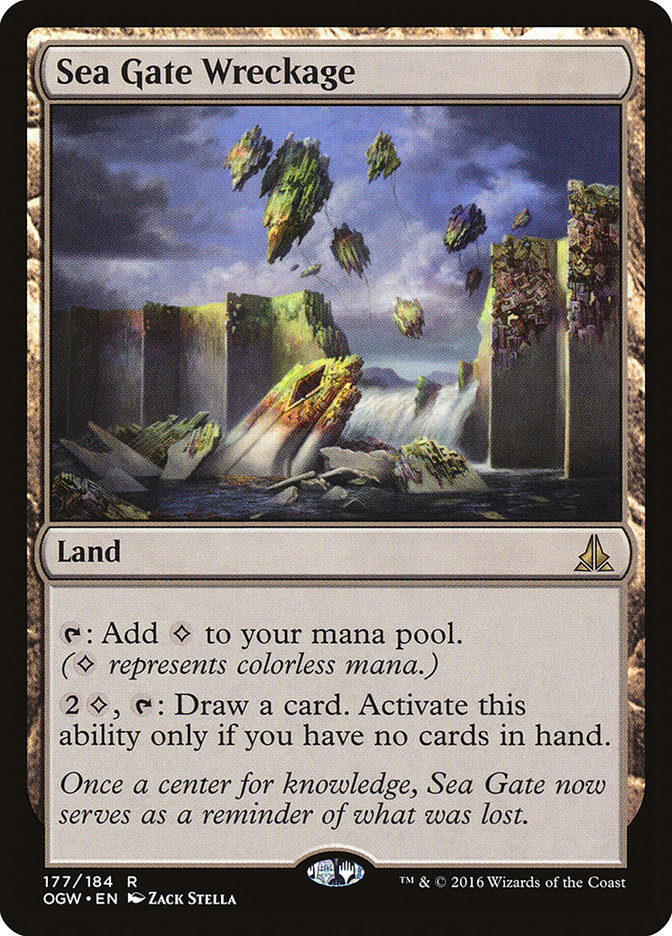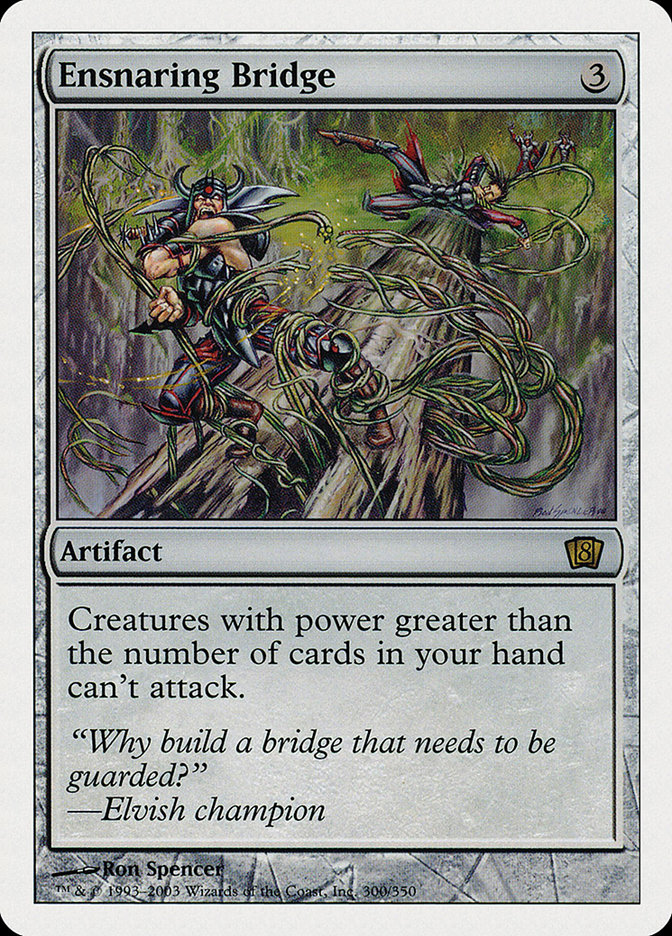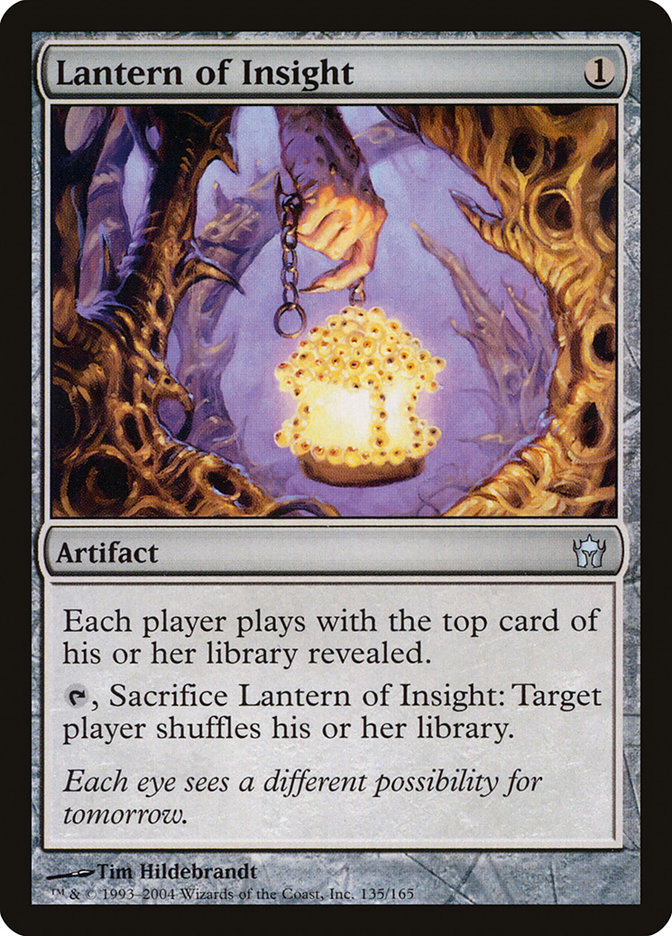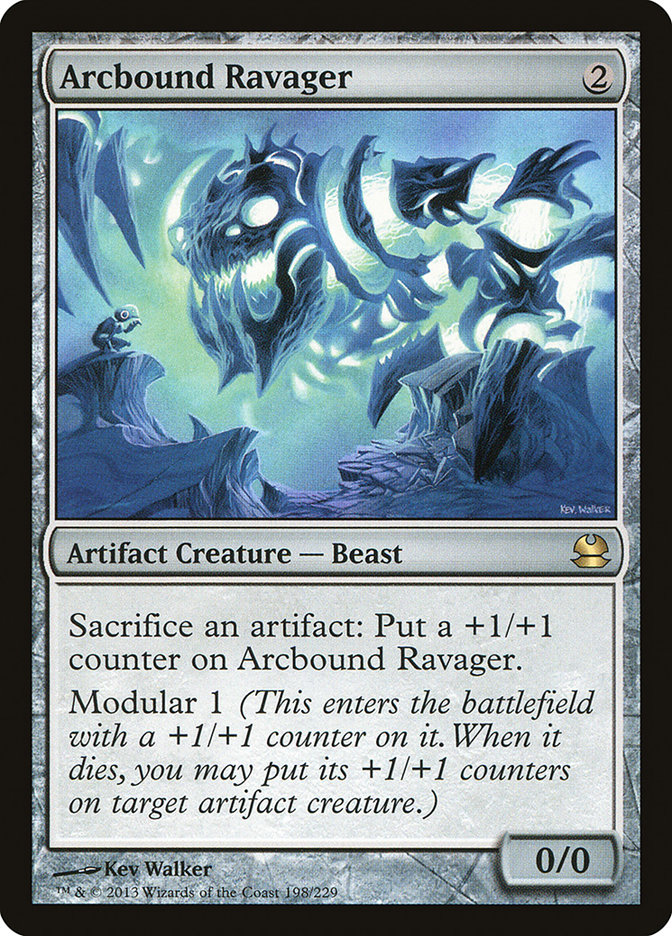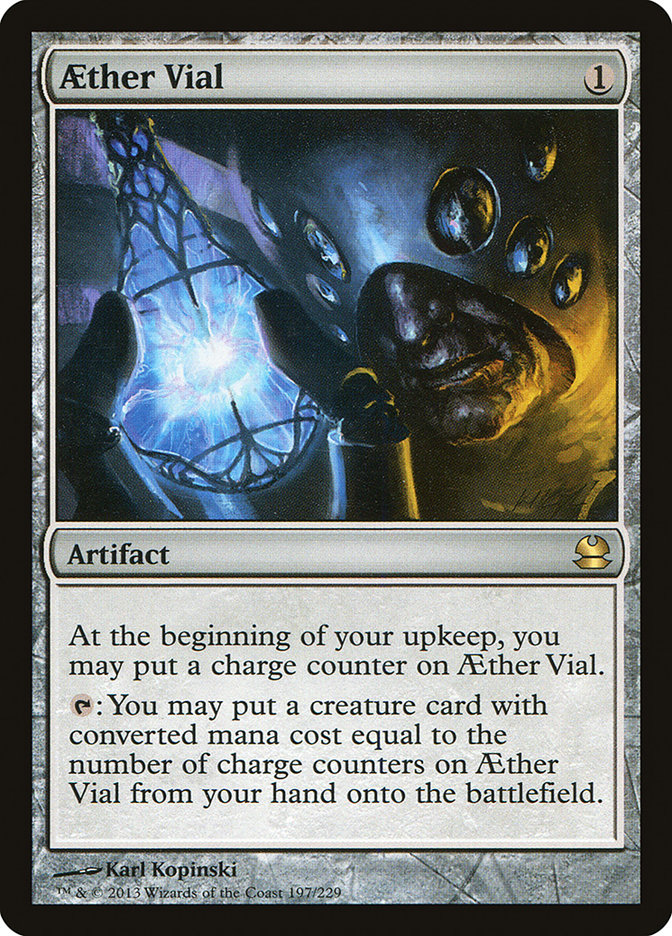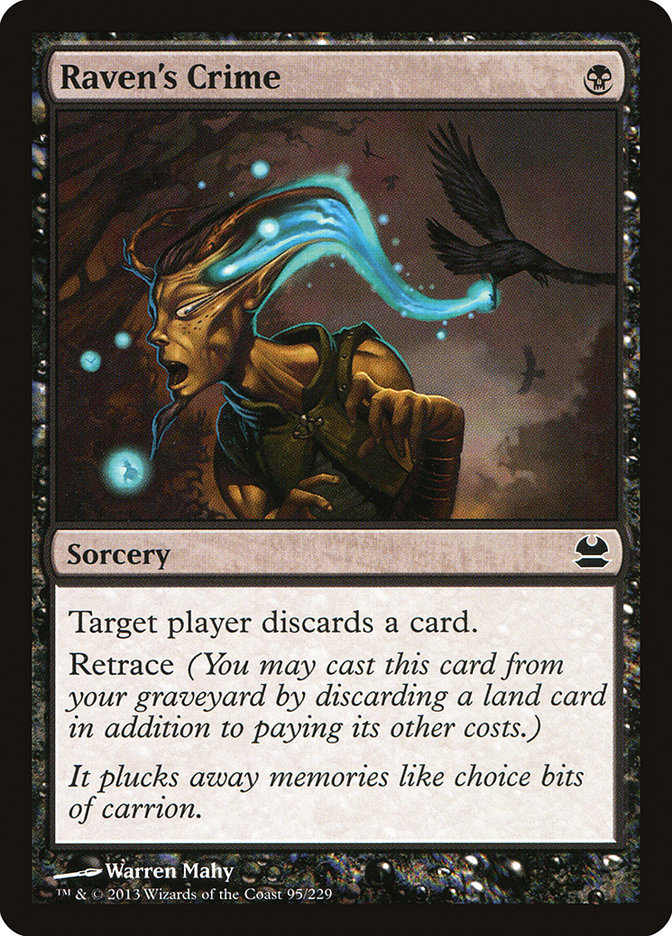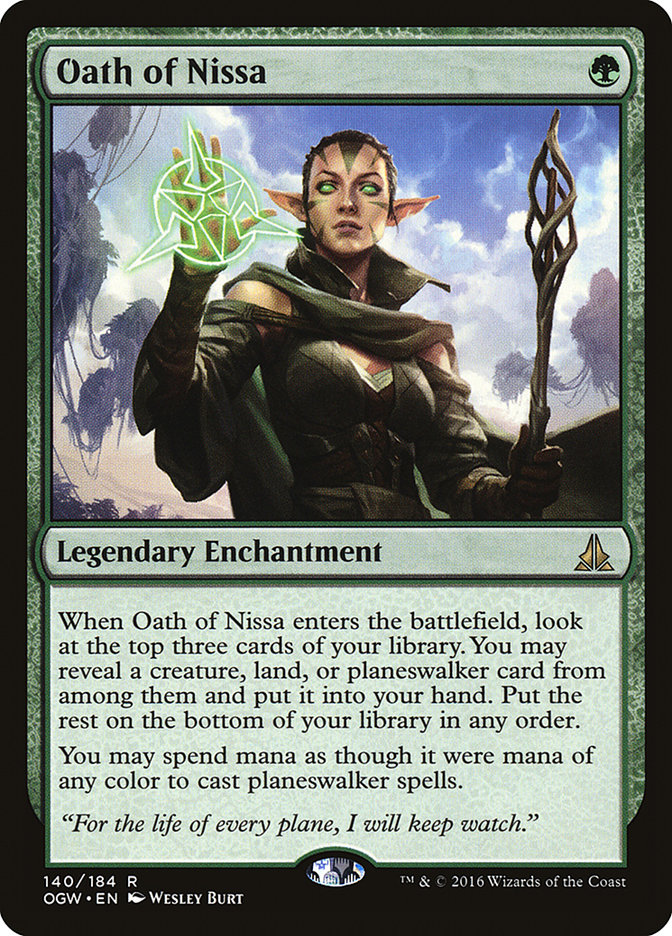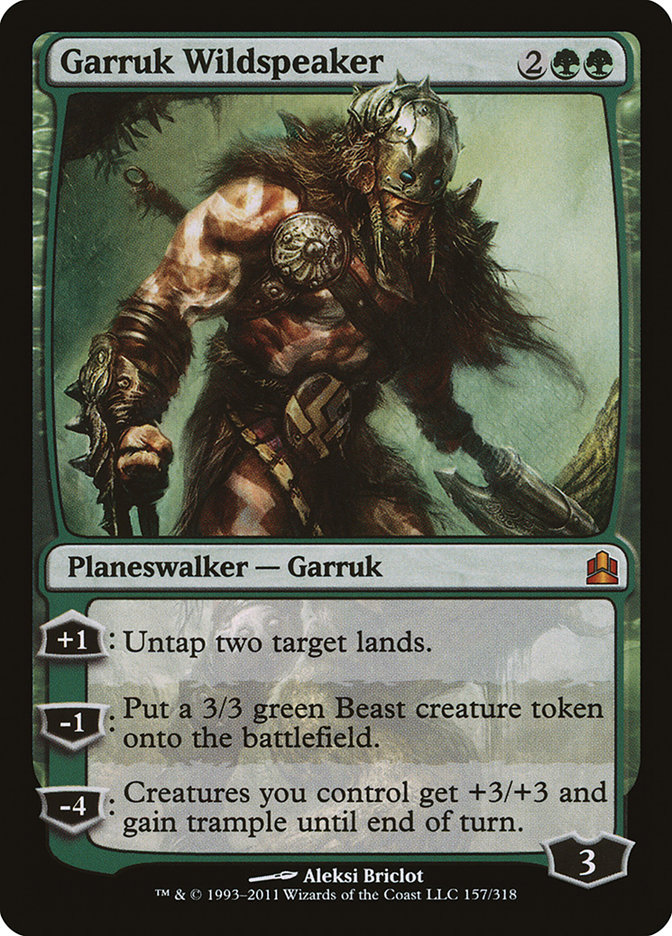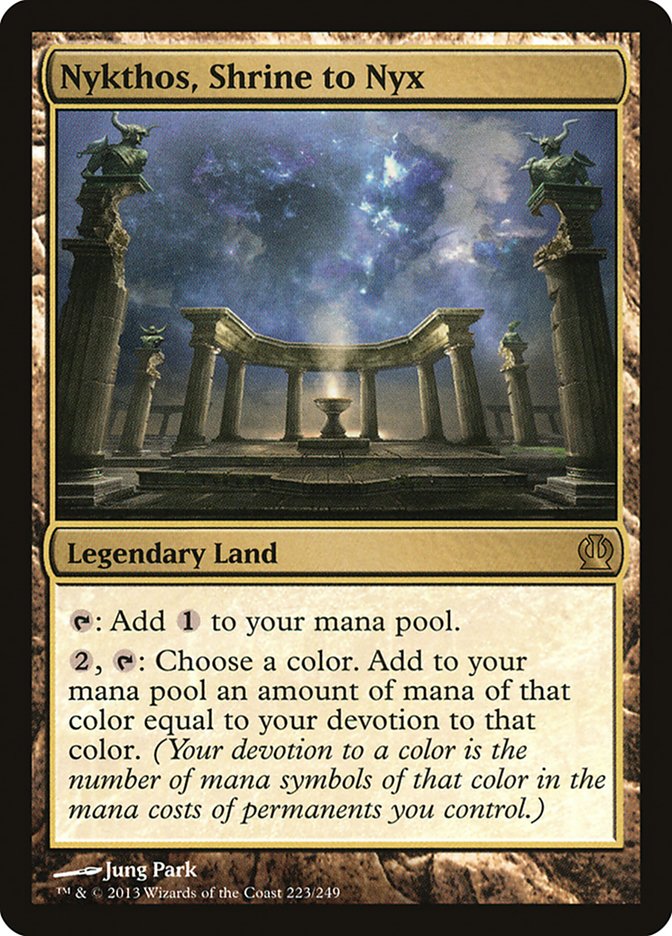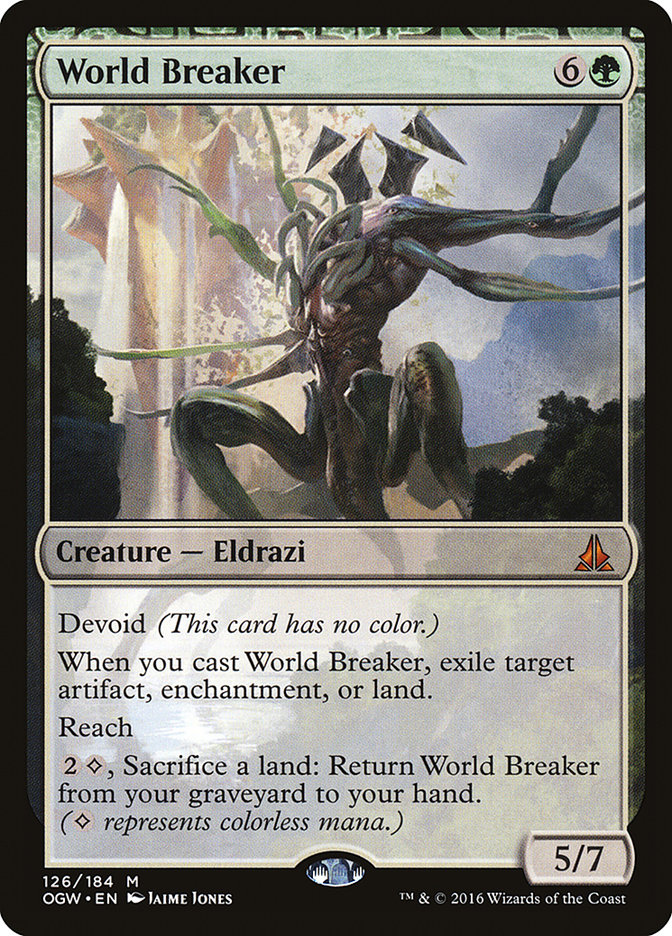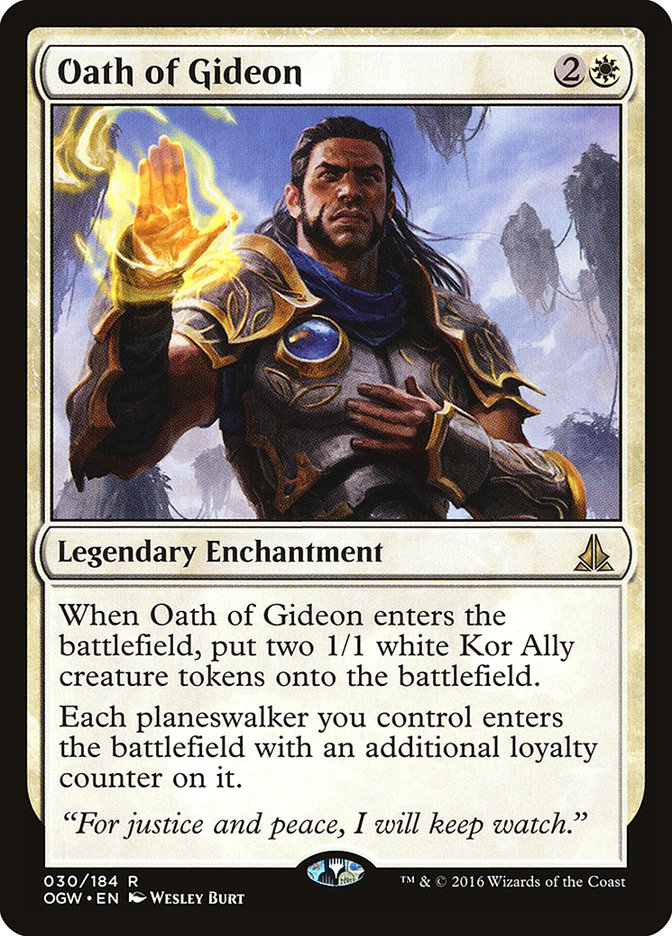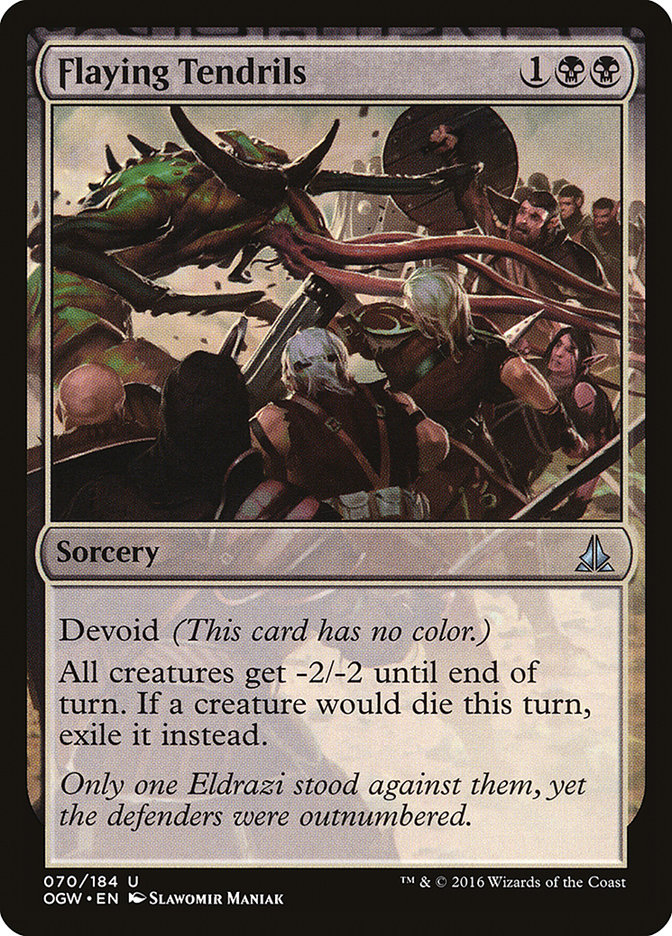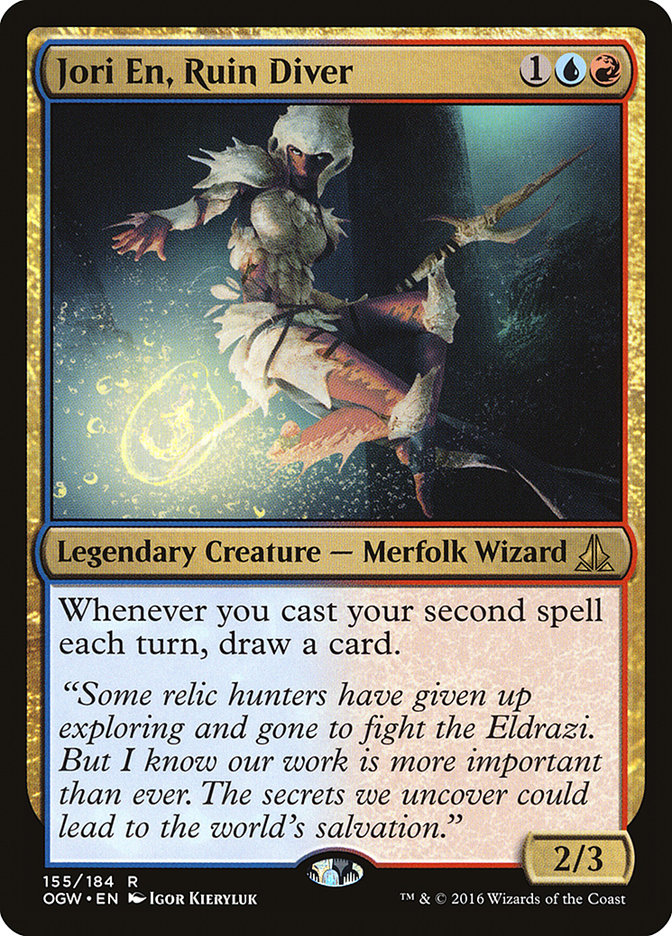Modern is supposed to be hard to shake up with a new set, but as we saw with Kolaghan’s Command, a single card can have fairly large ripple effects. And while it’s hard to change the most linear decks in the format, most sets offer the more fair decks additional tools and options that cascade through the format. As anticipated, the strategy that gains the most is Eldrazi, which might split into a few different strategies, but there are a handful of cards that can have serious implications in other archetypes.
For now, I’m going to look at the cards that are most likely to matter outside of Eldrazi decks, though I will mention that Reality Smasher is potentially a game changer that opens the door to aggro Eldrazi in addition to Eldrazi Ramp.
First, Sea Gate Wreckage.
This card won’t be ubiquitous. Few decks can use it. As great as drawing an extra card is, for most Modern decks, it’s hard to get into a spot where you can use this and hard to win once you’re there. It’s also expensive enough and slow enough that it’s hard to get to the point where you have time to use this many times. It’s a lot of hoops to jump through to get to something that is a lot stronger than Desolate Lighthouse, but still comparable, and I’m still very excited about this card.
So what do I want to do with it? I want to play it in decks that empty their hands, especially decks that are mostly colorless. Fortunately, Modern has a few decks like that already.
The best home for this is Lantern Control, a deck I already like. Lantern can easily use colorless lands and has plenty of access to colorless mana. It’s already in the market to empty its hand, since it’s an Ensnaring Bridge deck, and it’s playing a very long game, so it will get to draw many cards off Sea Gate Wreckage. The problem is, there’s only so much this card can actually add to your win percentage. Specifically, you have to have managed to get your hand into play in a position where you have time to use this, probably more than once for it to have any real impact, while still being alive. Once Lantern has its hand in play and hasn’t died for a turn or two, that probably means your opponent is at least partially locked out with Ensnaring Bridge and/or Lantern of Insight. Drawing extra cards helps you solidify that lock faster, but that matters in very few matches.
Lantern has a lot of options for ways to grind better–it could play any combination of cards like Life from the Loam, Crucible of Worlds, and Buried Ruin, but it doesn’t because those cards don’t help it get set up early, which is at least 90% of every game.
If that’s the ceiling, maybe this isn’t a card to get too hyped about.
What about Affinity?
This is another deck that has tons of colorless mana and uses it very well. It empties its hard on around turn 3 or 4 usually, just in time to start using Sea Gate Wreckage. Affinity also plays a very different game than Lantern. Lantern is trying to establish its inevitability–if it loses, most of the time, it loses very quickly. If it’s not dead on turn 5, the odds that it loses on each subsequent turn plummet. Affinity, on the other hand, is generally the aggressor. It most likely wins early, with the opponent trying to take control and establish inevitability. Sea Gate Wreckage is the kind of card that can take that out from under the opponent.
Fair decks try to interact with Affinity by using removal to slow them down, and then preying on the fact that Affinity has a lot of low impact cards. Sea Gate Wreckage helps overwhelm removal and find your high impact cards, so it’s doing something that plays out much better with the kinds of games Affinity plays, which is interesting, because it plays less well with the deck’s central narrative. It seems this card’s at its best when it’s trying to undercut the opponent’s narrative.
Now, the trick is that Affinity’s lands are already very good, and there’s a question about whether Affinity is actually better spent using mana on this than using that mana to animate its nexuses. Again, in the central narrative, the early turns when you’re just trying to get the opponent dead, you’ll want to use the nexuses instead; but if things go well for your opponent and they’ve dealt with your real threats and mostly stabilized the board at around eight life, then I’d probably rather draw a card than try to push a damage or two through a possible removal spell.
It’s also worth noting that this is the kind of card that gets much better after sideboarding. This is sideboarding 101, of course–games get longer, cards trade more, card draw improves, repeated card draw improves radically. I suspect early playtesting, which notoriously underplays sideboarded games, might find this card underwhelming, but I expect having access to this to pay substantial dividends in a full match.
All else equal, it’s hard for me to imagine that the first Sea Gate Wreckage could be wrong in Affinity. The question for me is whether you’re supposed to just find some land to trim to add a single Sea Gate Wreckage, or whether you’re supposed to reimagine the deck.
In Standard, Affinity with Aether Vial was the way to go. Modern has moved away from that, but I can imagine that Aether Vial might gain a lot of value when you have a steady stream of extra cards to play with it, and it frees up your mana to draw more cards. I could imagine a deck playing four copies of Sea Gate Wreckage and four Aether Vials eventually getting to the point where it could use multiple Sea Gate Wreckages in a turn, since the first helps you hit your land drops to fuel the second.
Aether Vial isn’t a weak card, adding it comes with natural resistance to counterspells and a bit of extra trickiness against people who might want to attack you. I’m not saying Sea Gate Wreckage will transform Affinity, but I definitely think it’s worth exploring.
Another option is to use this in any Raven’s Crime deck. Those decks are great at emptying their hands, and then they win by incremental card advantage, which is exactly what Sea Gate Wreckage provides. It’s easy for them to get to a boardstate where they’ve traded everything off and entered a topdeck war, and nothing wins such a war like drawing twice as many cards. The Smallpox style 8-Rack decks don’t necessarily have or want enough colorless lands to support this card, but it may not be unreasonable to try to build them a little differently to make it work. Life from the Loam decks are even better. Finding it and using it can get a lot more consistent mileage out of 1-2 copies, and this could make up for not having a mana sink like Punishing Fire or cycling lands.
Finally, the big mana/Expedition Map decks. Tron and Eldrazi could consider this, but the problem is that it’s very unlikely that your hand is going to be empty if you haven’t assembled your big mana. Once you have, A: you’ve probably won, and B: Eye of Ugin is better. This has corner case applications against people who are Thoughtseizing you a lot, but it’s likely too narrow to be worth the space.
The next most interesting card to me is Oath of Nissa. It’s like a weak Ancient Stirrings that doesn’t have incredibly strict deckbuilding requirements. Green offers deeper digging than this if you’re looking to hit specific things, like Ancient Stirrings and Commune with Nature, but the key here is that you get to choose a land or a spell. You may not get to choose from the full range of spells, but on turn 1, you’re mostly just looking to smooth your ratio of lands to spells, which this does relatively well. There are a lot of two-mana cards that do this a lot better, but one mana is just an entirely different animal.
This gets called the green Ponder, but that’s not a terribly useful way to think about it. Ponder saw surprisingly little Standard play the first time around. Where Ponder is best is where you’re trying to assemble a combo, trying to play as many spells as possible, or trying to fill your graveyard. Oath of Nissa doesn’t do these things particularly well, but the fact that it automatically gets rid of the stuff you didn’t want makes it more like Anticipate or Preordain, which, used fairly, are stronger than Ponder. Basically, this card doesn’t do what blue card draw does best–it doesn’t work with Delver of Secrets or Snapcaster Mage, and it doesn’t chain into more digging, but it does what green wants. It lets you smoothly play fair Magic. You’re more likely to have a good curve and a good mix of lands and spells, and if you have color intensive planeswalkers, like Liliana of the Veil or most four-mana planeswalkers, it’ll be a little easier to cast them.
This is an interesting card to play in a normal deck that’s using it for exactly face value. You can’t just put it in any green deck since you can’t have too many cards it misses, but more often than not, it’ll be fine.
Where it gets really interesting to me is with Nykthos, Shrine to Nyx. This cycles a very sticky source of devotion into play while digging for Nykthos, a card which radically changes the quality of draws and smoothing things when that doesn’t come together. That by itself is enough to get me interested, but where it really gets interesting is when you look at getting Eidolon of Blossoms into the mix. Oath of Nissa naturally limits the number of enchantments you can play before it threatens to miss, but you were never looking to go that deep, and cards like Courser of Kruphix obviously help your density of enchantments without cutting into your Oath of Nissa hits. Oath of Nissa also plays well with Garruk Wildspeaker, which plays well with Utopia Sprawl, which plays well with Eidolon of Blossoms and Nykthos, Shrine to Nyx. It might even be worth extending into Fertile Ground, depending on how things are built.
This deck was already a fringe deck in Modern, but Oath of Nissa might be exactly what it needed to propel itself firmly into the sphere of competitive Modern decks, especially since this is another deck that can use the recent big mana offerings well and might want something like Ulamog, the Ceaseless Hunger or even World Breaker, both of which, of course, Oath of Nissa can help find when you need it, giving you a different sort of flexibility, offering a card that does what others couldn’t.
Oath of Gideon is a weird one. Three mana for two 1/1s is pretty bad in Modern, so you need the secondary text to matter a lot. One extra loyalty is nice, especially if you have a lot of planeswalkers in your deck, but what you’re really looking to do is fundamentally change the way a planeswalker works when you play it. This means that if you want to build around this card in Modern, what you need is a planeswalker that can either use an ability it couldn’t use the turn you play it otherwise, or that sticks around when it wouldn’t otherwise when using an ability the turn you play it. To save you the trouble, here’s a complete list:
Lives:
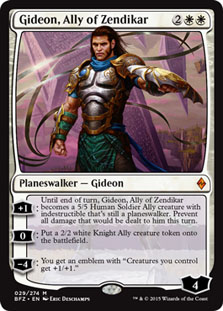
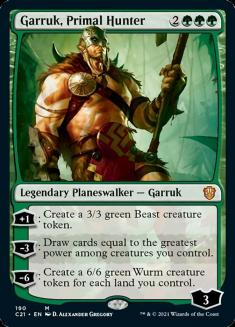
Can Ultimate:
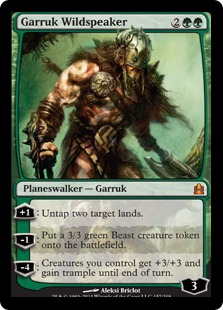
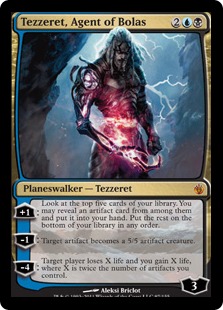
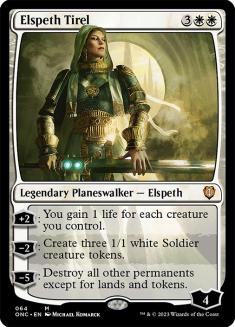
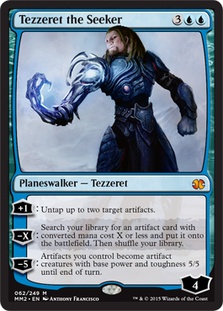
This isn’t a long list, but it has some options. Gideon, Ally of Zendikar, Garruk Wildspeaker, and Elspeth Tirel all make sense with the token theme Oath of Gideon is pushing naturally. Making an emblem without losing Gideon, having a four-mana overrun, and having a five-mana sweeper that doesn’t hit your creatures all seem great. This is basically asking for a new Modern deck, which is a high bar, and maybe nothing will come of it, but the payoff is at least interesting.
As for the Tezzerets, both of those are looking to create immediate kills. Tezzeret, Agent of Bolas requires ten artifacts if you haven’t done anything else, while Tezzeret the Seeker only requires four, but one additional for each blocker or removal spell your opponent has. These are manageable tasks that decks can be built to accomplish, but Oath of Gideon isn’t going to be on plan, and it’s likely not even on color for the decks that are doing this. Moreover, these decks tend to have a lot of the same weaknesses as Affinity or Lantern, without the same history of success, and may ultimately just be bad versions of the Krark-Clan Ironworks decks.
Flaying Tendrils–This does a thing, the thing is good and clear; this is a sideboard card rather than a build around.
Jori En, Ruin Diver gets a lot better with free spells and Snapcaster Mage, and likes the same things as Abbot of Keral Keep. Just hold a Gitaxian Probe or Mishra’s Bauble until turn 3 when you cast Jori En, Ruin Diver and you get a card before your opponent can use a removal spell on it. The value just keeps going from there. This is a potentially great addition to almost any Snapcaster Mage deck.
Reflector Mage, as Ari mentioned, is interesting in Chord of Calling/Restoration Angel decks similar to Jeff Hoogland’s from this weekend’s #SCGCIN.
Creatures (29)
- 4 Birds of Paradise
- 1 Kiki-Jiki, Mirror Breaker
- 2 Eternal Witness
- 1 Wall of Roots
- 1 Orzhov Pontiff
- 1 Reveillark
- 1 Fulminator Mage
- 1 Qasali Pridemage
- 3 Wall of Omens
- 1 Spellskite
- 2 Scavenging Ooze
- 3 Restoration Angel
- 4 Voice of Resurgence
- 2 Courser of Kruphix
- 2 Pia and Kiran Nalaar
Lands (23)
Spells (8)

What Ari didn’t mention is how great it is against Amulet specifically, assuming Amulet’s still legal. Bouncing a Primeval Titan isn’t that exciting of a prospect, since they can just replay it, get the trigger, and give it haste; and they’re potentially better off than they would be if you didn’t bounce it, but when you add that they can’t play it next turn, you get a turn off, and they likely won’t be able to do anything relevant that turn. Then you get to untap, and when they play it the next turn, you can Restoration Angel the Reflector Mage, and at this point, you’ve likely bought enough time to win the game.
Those are the main cards so far that I could see making a big impact outside of Eldrazi Temple decks. The creature-lands will almost certainly see some play, but I don’t expect them to fundamentally change anything much. They just give decks slightly different options for their creature-lands.
Jori En, Ruin Diver and Sea Gate Wreckage are the cards I expect to most improve existing strategies, and Oath of Nissa is the most likely to bring a new/currently fringe deck into the format.

